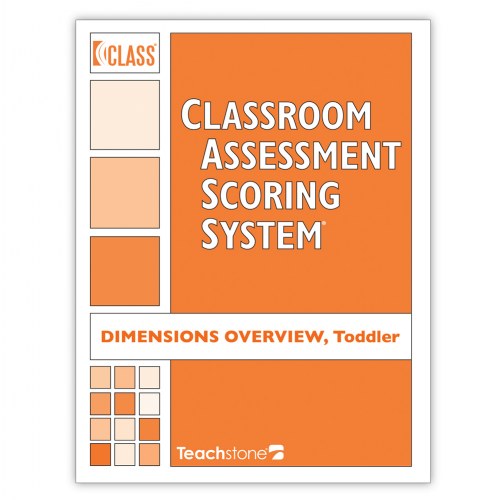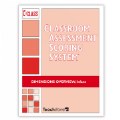CLASS® Dimensions Overview - Toddler - Set of 5 - English
This tri-fold laminated sheet is a handy reference for users of the popular CLASS® Toddler observation tool. Available in convenient packages of 5, this sturdy quick-sheet shows evaluators what to look for while observing each of the 8 CLASS® Toddler dimensions and scoring the tool. This product is part of CLASS®, the bestselling classroom observational tool that measures interactions between children and teachers -- a primary ingredient of high-quality early educational experiences. With versions for toddler programs, PreK, and K-3 classrooms, the reliable and valid CLASS® tool establishes an accurate picture of the classroom through brief, repeated observation and scoring cycles and effectively pinpoints areas for improvement. Set of 5.
CLASS™ Toddler
The accurate, reliable way to assess teacher–child interactions
For programs serving children from 15–36 months
With this toddler version of the widely used Classroom Assessment Scoring System™ (CLASS™) tool, your early childhood program will have an accurate, reliable way to assess classrooms. The CLASS™ Toddler tool assesses teacher–child interactions, a primary ingredient of early educational experiences that prepare children for future school success.
This reliable and valid tool:
- Assesses two crucial domains of teacher–child interaction: Emotional and Behavioral Support and Engaged Support for Learning
- Provides developmentally appropriate descriptions of what effective interactions look like in toddler classrooms
- Establishes an accurate picture of classroom interactions through brief, repeated observation and scoring cycles
- Highlights areas of strength and areas for growth useful for guiding improvement efforts
The CLASS™ Toddler Dimensions
The CLASS™ Toddler tool measures eight critical dimensions that fall under two domains:
Emotional and behavioral support
- Positive climate
- Negative climate
- Teacher sensitivity
- Regard for child perspectives
- Behavior guidance
Engaged support for learning
- Facilitation of learning and development
- Quality of feedback
- Language modeling





